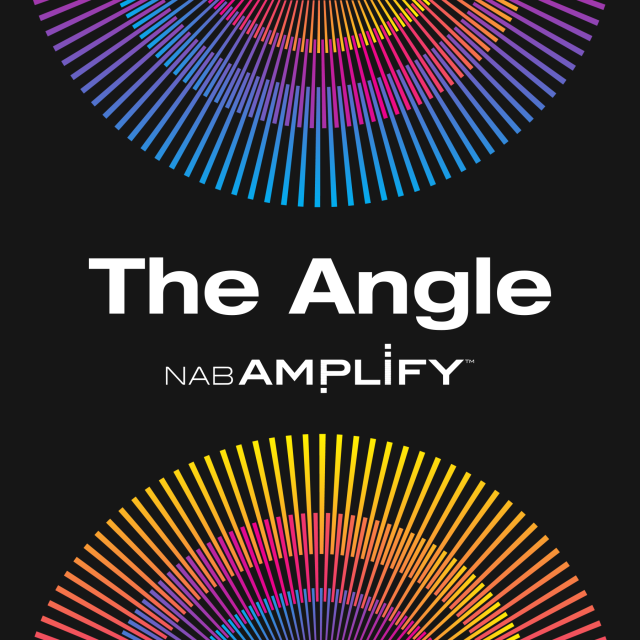
TL;DR
- Streaming video expert Jan Ozer says AI-powered compression technologies can deliver benefits but buyers should put vendor claims to the test before investing.
- At NAB Show’s Streaming Summit, Ozer shared the results of a survey into a dozen market-leading AI codec makers.
- Many make great claims, says Ozer, and while none are completely misleading it would pay not to take any at face value.
Artificial intelligence has become a buzzword across all technologies, including streaming video, with the promise of revolutionizing how we create, compress, and watch videos. However, it’s crucial to separate the hype from reality.
“The best way to consider AI when exploring streaming related product and services is to ignore it completely,” streaming video expert Jan Ozer, owner of the Streaming Learning Center, said at NAB Show’s Streaming Summit. You can download his presentation here.
The rationale is that it doesn’t matter if something is powered by AI or not. What matters is a sober assessment of its merits. In essence: don’t get blinded by whether a product has the bling of AI marketing. Judge it just as you would any other piece of equipment.
“You need to have buying criteria, an ROI or some measurable benefit,” said Ozer. “If it meets that benefit, you’re going to buy it, if it doesn’t, you’re not going to buy it, and whether or not it has AI, it’s kind of irrelevant.”

That’s partly because AI is not new to the streaming video space. R&D into how AI or machine learning could deliver superior (cost and bitrate-efficient) codecs have been ongoing for nearly a decade.
“It’s been coming, we just didn’t pay attention to it, because we thought it was all hype,” Ozer says. “Now it’s here, you can evaluate the whole product just like you always did.”
His session, “Beyond the Hype: A Critical Look at AI in Video Streaming,” explored the most recent streaming-related AI announcements to detail which to dismiss, which will become relevant, and when.

Just because a codec has an AI-powered algorithm, however, shouldn’t blindside you. Ozer’s advice is to look at how any product fits into a system end-to-end.
Many AI tools are open source, which means you need to drill into what makes this open source implementation different and beneficial to any other.
Ozer has a checklist of questions that buyers are advised to at least consider before making an investment. He urges prospective customers to dig beyond the marketing messaging and question the claims that vendors are prone to make.
“It’s worth considering, whether the product or service existed before AI or did they just bolt AI on to something that existed before? If so, what was the benefit that AI brought? How did they validate that?”
If claims are made related to new AI delivered compression efficiency, quiz whether apples are being compared to apples.
“Bandwidth savings relates to which codec you’re comparing it to, which implementation of that codec, what content is being tested, at what resolution. Very few companies go through many academic-type research papers to actually define all of this.”
AI, he stresses, “is only going to be a component of that product. It’s not going to be the whole product, and you care about whole product performance.”
Ozer has gone into some depth about some of the leading AI-related encoding and compression product on the market including from Digital Harmonic, Intera, Bitmovin, IMAX, DeepRender and InterDigital. He interviewed about a dozen companies for his survey, which he published on LinkedIn and supplemented with recorded podcasts on YouTube.
More than one company claims that its AI-driven innovation delivers 50% greater efficiency but don’t necessarily spell out which codecs or which metrics they’ve used to bench that mark.
DeepRender, for instance, claims to be the world’s only AI-based codec company. “They are developing a codec from scratch using AI. Their bold claim is 45% greater efficiency than VVC,” he says.
“Intera’s Baton AI based captioning tool is a mix of open source and homegrown captioning technologies that didn’t exist before AI, but AI is said to make it faster, better, and gives it more features.”
IMAX SSIMWAVE will adjust the encoder settings upwards and downwards dynamically so that you can save bandwidth. And now comes with a metric of its own devising to help users calculate savings.
Bitmovin offers a machine learning-based analytics tool that will highlight an issue with quality or bandwidth and suggest a solution. “They’re not only showing what the data points are, they’re telling you what to do with those data points.”

Why subscribe to The Angle?
Exclusive Insights: Get editorial roundups of the cutting-edge content that matters most.
Behind-the-Scenes Access: Peek behind the curtain with in-depth Q&As featuring industry experts and thought leaders.
Unparalleled Access: NAB Amplify is your digital hub for technology, trends, and insights unavailable anywhere else.
Join a community of professionals who are as passionate about the future of film, television, and digital storytelling as you are. Subscribe to The Angle today!

